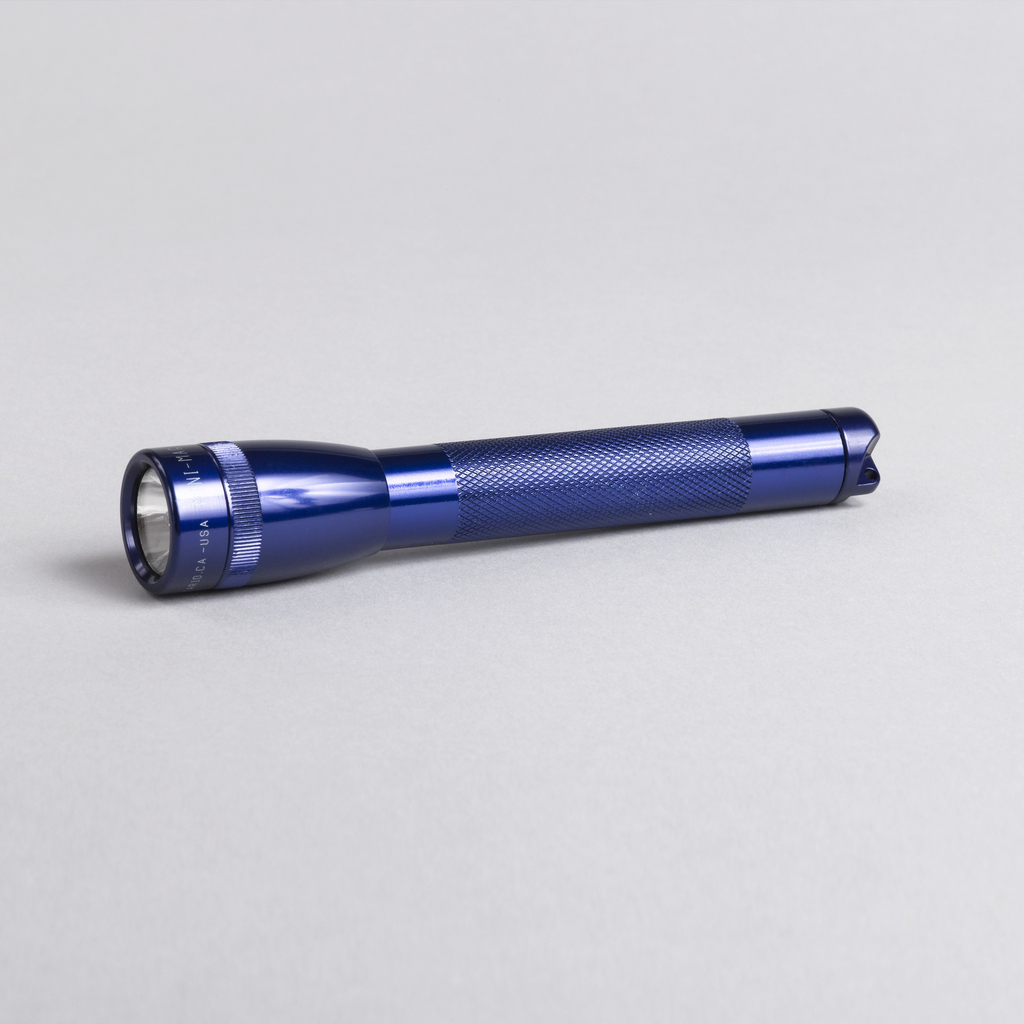Although now familiar tools used during power outages and camping trips, personal flashlights were revolutionary in the early twentieth century. The invention of the dry cell battery in 1896 enabled the first non-combustible lighting devices, allowing for safer handheld options than kerosene and oil lamps, candles, and torches, or other instruments previously powered by liquid cell batteries that easily broke and spilled. This new battery led to the first flashlight, invented in 1899 by David Misell, given its name for the manner in which the light would flash instead of staying on, as early zinc-carbon batteries were not energy efficient. As batteries evolved, their efficiency improved and their size shrunk. The AA and AAA batteries allowed for even smaller personal flashlights, like this miniature version of Mag Instrument, Inc.’s D and C battery model Maglite flashlights that were introduced in 1979.
The Mini-Maglite debuted in 1984 to instant commercial success, finding its market primarily with security forces, police, and similar professions. Everything from its batteries to its form was made efficient; the knurled body aided grip and the absence of an external power switch created a streamlined design while preventing the flashlight from turning on by accident. Along with the Volkswagen Beetle and Levi’s 501 style jeans, the Mini-Maglite was among the most popular consumer goods in the 1980s. In 1988, Fortune magazine ranked Mag Instrument, Inc.’s flashlights among the top one hundred products that “America makes best.”[1] By 1989, twenty-five million Mini-Maglites had sold and the flashlight retailed as an accessory in department stores like Bloomingdale’s.[2] This model was reproduced internationally, and in 1996 it was one of the most copied goods in the world, though few matched the original’s standards. The Mini-Maglite is still manufactured today, now with LED bulbs, sold by Mag Instruments, Inc. among ten million other flashlights that the company produces each year.
Emily Kress is a Krueger Intern in the Product Design and Decorative Arts Department, Cooper Hewitt, Smithsonian Design Museum
[1] http://archive.fortune.com/magazines/fortune/fortune_archive/1988/03/28/70366/index.htm
[2] http://www.nytimes.com/1989/01/20/business/company-news-for-bush-40000-points-of-maglites.html
